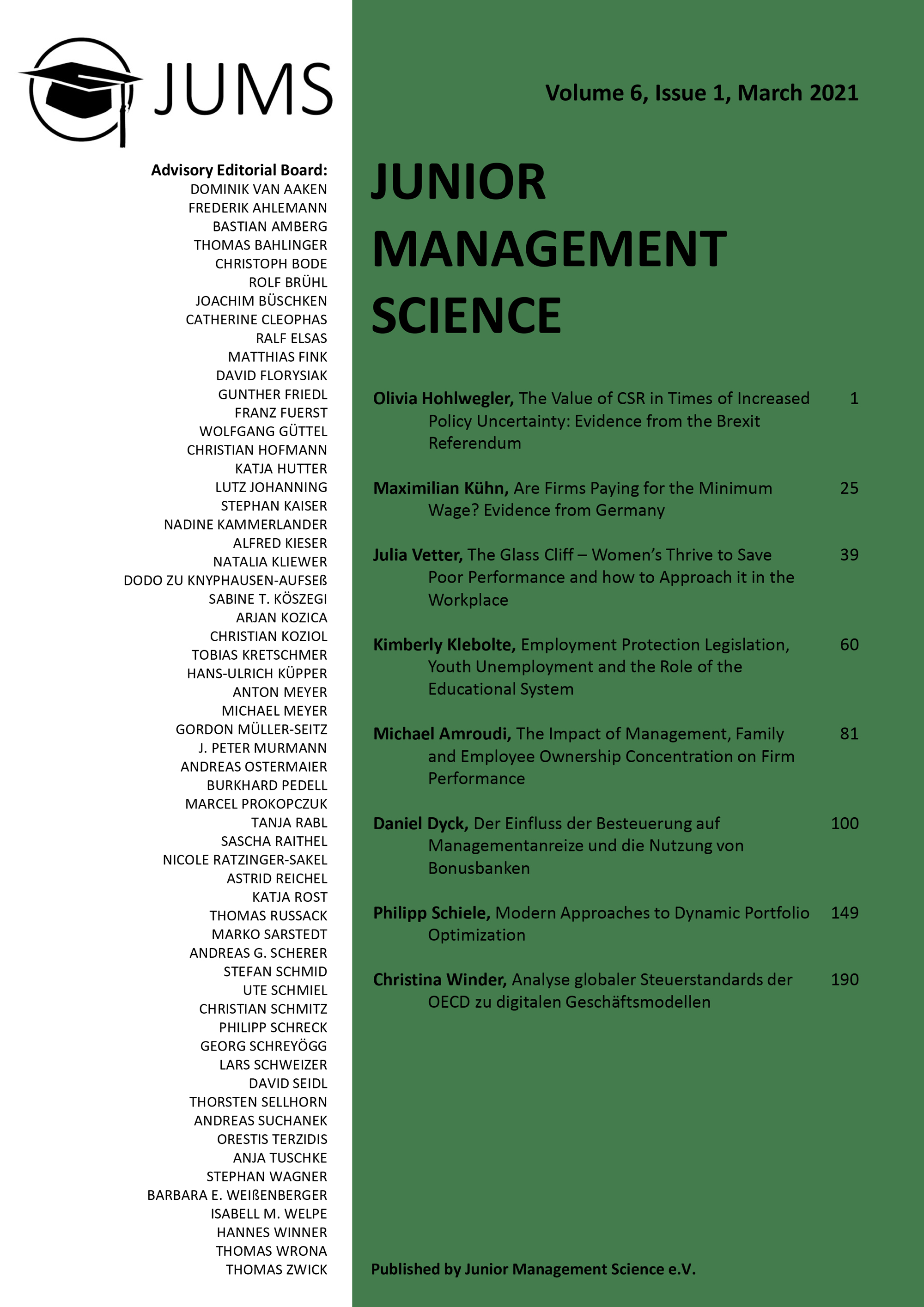Abstract
Following an intensive discussion, Germany introduced a nationwide minimum wage on 1 January 2015, which was set at an hourly wage of € 8.50. Undeniably, there is a significant amount of international and national literature that discusses the minimum wage, both generally and specifically, in Germany. Counterintuitively, only small, negative employment effects are identified for the German minimum wage, whereas some international studies (e.g. for the US) even found positive effects. However, only a few papers focus on different sorts of adjustment channels that firms are applying as a response to the higher labor costs. This thesis focuses on the analysis of firms’ profitabilities and asks if profit margins significantly declined in highly affected industries, as a response to the nationwide minimum wage. Therefore, this paper uses a Difference-in-Difference approach that compares the ratio of pre-tax profits to revenue in industries which are more exposed than their less affected counterparts. To define the exposure of an industry to the minimum wage, the Structure of Earnings Survey of 2014 is used to calculate industry specific bite measures. Surprisingly, no significant decrease in firm’s profitability can be found as a response to the German minimum wage introduction in 2015. This result is consistent over all model specifications that are used in the underlying thesis.
Keywords: Minimum wage; Germany; difference-in-difference; adjustment channels; profitability; firm-level performance.

Dieses Werk steht unter der Lizenz Creative Commons Namensnennung 4.0 International.
Copyright (c) 2021 Junior Management Science e.V.

